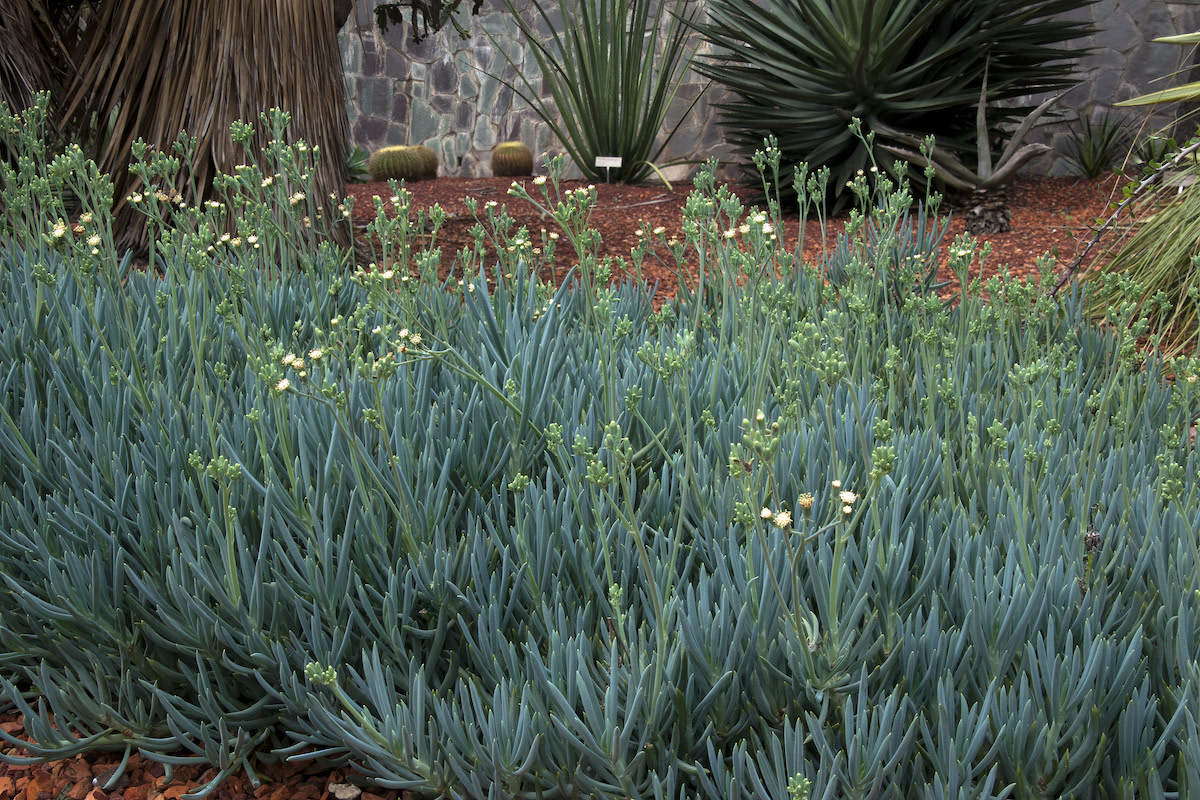10 Senecio Plant Varieties and Care Tips
Written by MasterClass
Last updated: Dec 2, 2021 • 4 min read
Senecio is a large genus of plants in the daisy family. Although “daisy” might bring to mind wildflowers, some of the most famous Senecio species are succulents grown as houseplants and ground covers.
Learn From the Best
What Is Senecio?
Senecio is a genus in the daisy family (Asteraceae) that comprises more than 1,000 annual and perennial plants, about ten percent of which are succulents. In 1997, some of the best-known succulent plants in the Senecio genus moved to a new genus called Curio. Today, many Senecio plants are known by both genus names.
10 Senecio Plant Varieties
Some Senecio species are weeds, while others are popular houseplants or ground covers.
- 1. Blue chalk stick (Curio repens or Senecio serpens): Sometimes called blue ice plant, this succulent isn’t part of the ice plant family (Aizoaceae), although landscapers commonly use it as ground cover, like an ice plant. Its gray-blue, tubular leaves are perfect for a rock garden.
- 2. Cocoon plant (Senecio haworthii): Known as the cocoon plant, this South African succulent has cylindrical gray leaves that point upward, resembling a cocoon.
- 3. Groundsel (Senecio vulgaris): This annual herb is native to Northern Africa and Europe. Like many Senecio species, it has daisy-like yellow flowers and produces fluffy white tufts that help distribute its seeds through the wind.
- 4. Ragwort (Senecio jacobaea or Jacobaea vulgaris): Also called stinking willie or benweed, ragwort is a wildflower (or weed) from northern Eurasia.
- 5. Spear head (Senecio kleiniiformis): The spear head gets its name from its triangular green leaves, which resemble arrowheads.
- 6. String of bananas (Curio radicans or Senecio radicans): This South African vine succulent is closely related to the string of beads plant. Instead of round, beadlike leaves, the string of bananas (also known as fishhook Senecio) has crescent-shaped leaves.
- 7. String of beads (Curio rowleyanus or Senecio rowleyanus): This succulent vine has round leaves resembling a string of pearls. Native to South Africa, it’s often kept in hanging baskets that show off its dangling “beads.”
- 8. String of dolphins (Curio × peregrinus or Senecio peregrinus): This vine succulent is a hybrid of Curio rowleyanus (string of beads) and Curio articulatus (candle plant). Amazingly, its leaves resemble the silhouette of a dolphin.
- 9. Vertical leaf Senecio (Senecio crassissimus): Also known as lavender steps or the propeller plant, this upright succulent has flat, blue leaves and flashy purple margins. Endemic to Madagascar, it thrives as a houseplant in cooler climates.
- 10. Woolly Senecio (Senecio scaposus): The woolly Senecio has silver finger-shaped leaves shaped on small woody stems.
How to Grow Senecio
You can grow Senecio from seed, but most gardeners purchase small transplants at garden centers. If you have access to a Senecio succulent, you can try propagating it from cuttings. Here’s how:
- Obtain the cutting. Take a cutting from an established Senecio plant, preferably from succulent varieties. Make sure that your cutting is about four to six inches in length.
- Prepare a tray or pot. Many succulent species prefer well-draining, sandy soil, but research your plant selection to learn more about its needs. Fill a potting tray or another container with your plant’s preferred potting soil.
- Plant the cutting. Dip the bottom inch of your Senecio cutting in rooting hormone and plant it in your potting tray or pot. Tamp the soil down to make sure that your cutting can stand upright. Water your cutting immediately, but do not make the soil too moist.
- Transplant the cutting. Over the next few months, check on the rooting progress of your Senecio. Once you can tug on the plant with a little bit of resistance, it is ready to be planted in its permanent spot. Alternatively, leave it in its original container until it outgrows its pot.
How to Care for Senecio
Senecio is a large genus comprising over 1,000 different species of plants, each with its own unique needs. The succulent Senecios are the most popular house and garden plants: They are generally drought-tolerant and thrive in USDA Hardiness Zones 9–12. Here’s how to care for Senecio varieties:
- Provide plenty of light. Many Senecio varieties do best with full sun. If you live in a cool climate, give your plant the extra warmth of direct sunlight. In a hot climate, your plant may prefer bright indirect sunlight.
- Choose a potting mix with sandy soil. Succulents generally prefer sandy soil. Choose a potting mix that includes plenty of sand, often labeled “succulent” or “cactus mix.”
- Allow the soil to dry completely before watering. Overwatering can be a major problem for members of the Senecio genus. Take care to let your plant’s soil dry out completely in between waterings to prevent root rot.
Learn More
Grow your own garden with Ron Finley, the self-described "Gangster Gardener." Get the MasterClass Annual Membership and learn how to cultivate fresh herbs and vegetables, keep your house plants alive, and use compost to make your community—and the world—a better place.
